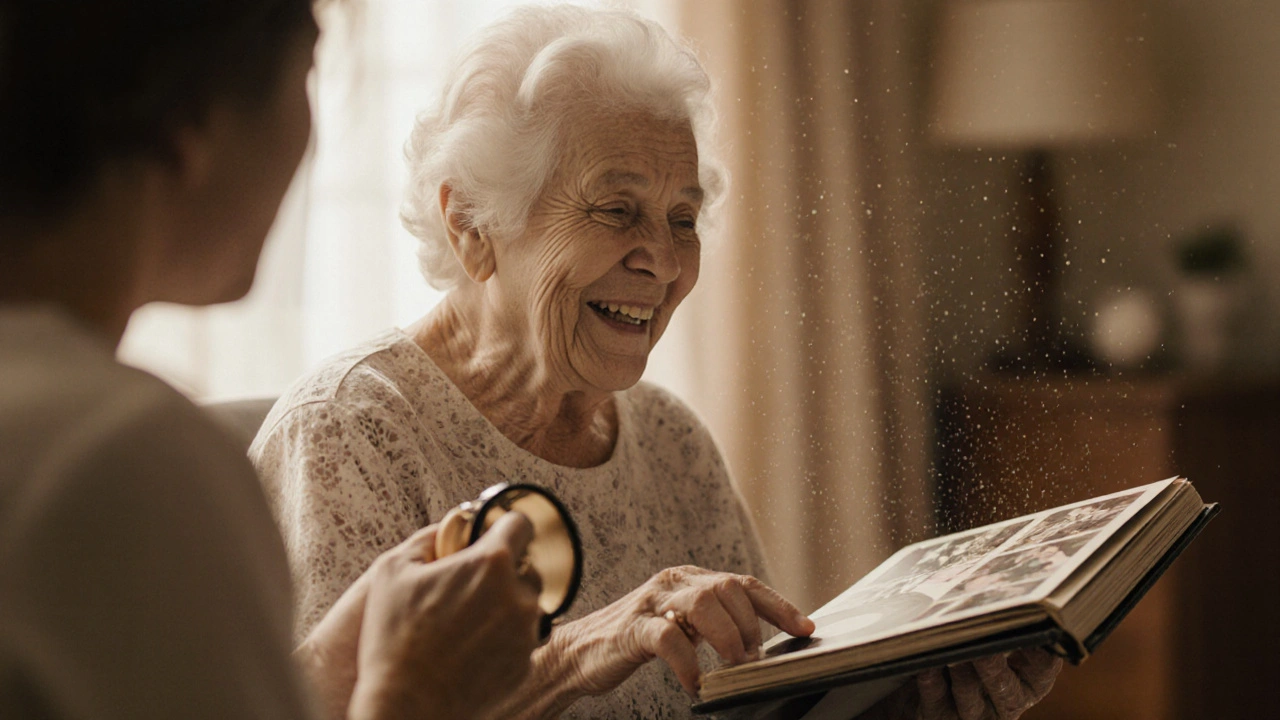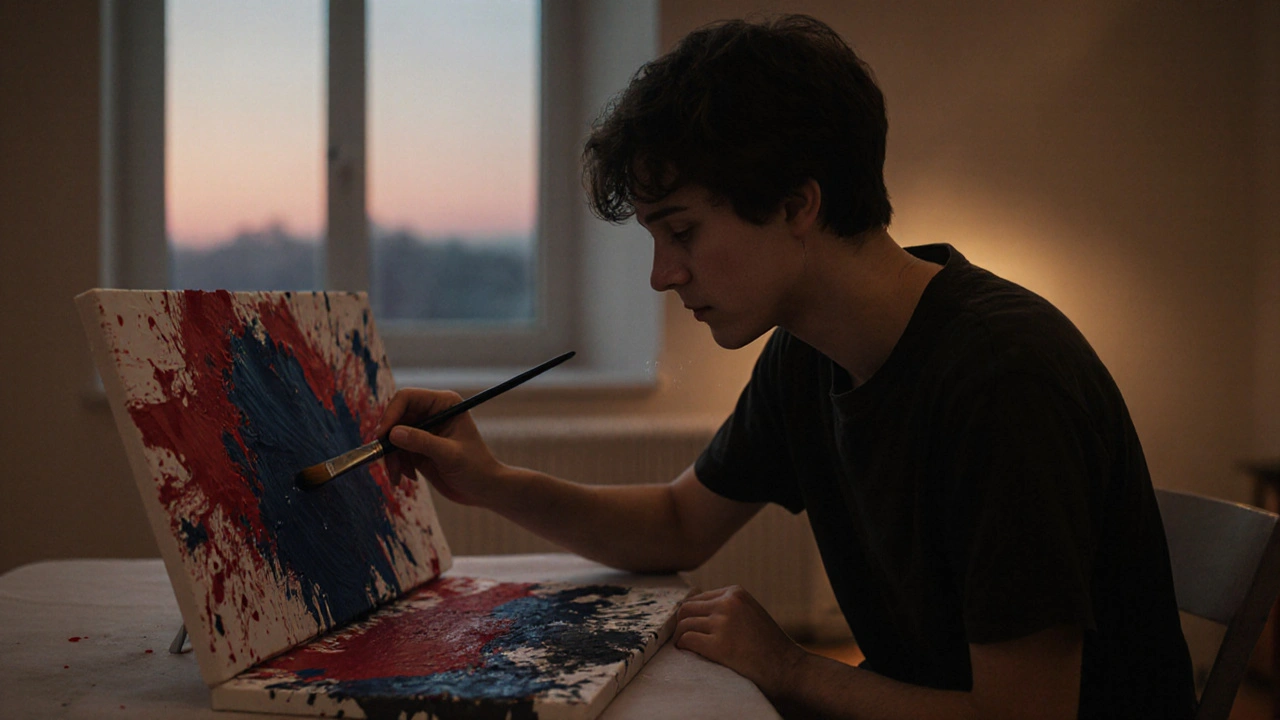When you’re overwhelmed, anxious, or stuck in a loop of negative thoughts, talking about it doesn’t always help. Sometimes, words fail. That’s where creative arts therapies step in-not as a luxury, but as a necessary part of healing. People don’t just need to talk through pain. They need to paint it, move it, sing it, or write it out. And science is catching up to what artists and healers have known for centuries: expression isn’t just creative. It’s clinical.
What Exactly Are Creative Arts Therapies?
Creative arts therapies are structured, evidence-based practices that use artistic expression to support emotional, cognitive, and physical well-being. They include art therapy, music therapy, dance/movement therapy, drama therapy, and expressive writing. Each one uses a different medium, but they all share the same goal: to help people access feelings they can’t put into words.
Unlike casual hobbies, these therapies are led by certified professionals-people with master’s degrees in both therapy and the arts. They don’t teach you how to draw beautifully or sing in tune. They guide you to use creativity as a bridge to inner experiences. A child who won’t speak after trauma might draw a house. A veteran with PTSD might drum out rage. An elderly person with dementia might hum an old song and suddenly remember their mother’s face.
How It Works: The Brain on Creativity
When you create, your brain shifts. The prefrontal cortex-the part that overthinks, judges, and worries-quiets down. Meanwhile, the limbic system, which handles emotion and memory, lights up. This is why someone can cry while painting a color they can’t name, or feel relief after writing a letter they’ll never send.
Studies from the Journal of the American Art Therapy Association show that just 45 minutes of art-making reduces cortisol levels by over 75% in adults. Music therapy has been shown to lower heart rate and blood pressure in patients with chronic pain, sometimes more effectively than medication alone. Dance therapy improves motor coordination in Parkinson’s patients and helps those with autism regulate sensory input.
It’s not magic. It’s neuroscience. When you engage in creative movement or sound, you activate the same brain regions involved in emotional regulation, self-awareness, and memory retrieval. That’s why creative arts therapies are used in hospitals, rehab centers, schools, and even prisons-not as a side activity, but as a core treatment.
Why Holistic Health Needs More Than Pills and Talk Therapy
Modern medicine treats symptoms. Holistic health treats the whole person. That means body, mind, spirit, and emotion-all connected.
Talk therapy works great for people who can articulate their pain. But what about someone with severe depression who can’t find the words? Or a teenager who feels too ashamed to say they’re being bullied? Or a stroke survivor who lost speech but still feels deeply?
Creative arts therapies fill those gaps. They don’t ask you to explain. They invite you to show. A drawing can reveal fear. A rhythm can express grief. A gesture can communicate what a voice never could.
And it’s not just for mental health. People with cancer use art therapy to cope with treatment side effects. Burn victims use movement therapy to rebuild body awareness. Children with autism use drama to practice social cues. Elderly people with Alzheimer’s reconnect with identity through familiar songs.
These aren’t nice-to-haves. They’re essential tools for healing when traditional methods fall short.

Real People, Real Results
In a 2024 study at St. Vincent’s Hospital in Melbourne, 86 patients in a palliative care unit participated in weekly art therapy sessions. After six weeks, 92% reported improved emotional well-being. One woman, recovering from lung cancer, painted a series of birds escaping cages. Her therapist didn’t interpret it. She just sat with her while she painted. The woman said, “For the first time in months, I didn’t feel like a patient. I felt like me.”
A group of refugee teens in Sydney joined a music therapy program after fleeing war. Many had lost family members and spoke little English. They didn’t talk about trauma. They made beats together. One boy, who hadn’t spoken in six months, started rapping. His lyrics were raw, but he didn’t need to translate them. His rhythm told the story.
These aren’t isolated stories. They’re repeatable outcomes. The American Journal of Public Health found that communities with access to creative arts therapies had 30% lower rates of depression and anxiety over five years.
The Misconceptions That Keep People From Trying It
Many people think they need to be “artistic” to benefit. That’s the biggest myth.
You don’t need talent. You don’t need to be good. You don’t even need to like the result. The value isn’t in the final product. It’s in the process-the way your hand moves, the way your body responds to rhythm, the way a melody unlocks something buried.
Another myth: it’s only for kids or people with mental illness. In reality, creative arts therapies are used by CEOs managing burnout, athletes recovering from injury, caregivers grieving, and seniors facing loneliness. One 78-year-old man in my neighborhood started writing poetry after his wife passed. He never shared them. But he said, “I finally stopped screaming inside.”
And yes, it’s not a replacement for medication or psychotherapy. But it’s a powerful complement. When combined with counseling or medicine, creative arts therapies often speed up recovery and reduce relapse rates.

How to Get Started-No Art Degree Required
You don’t need to enroll in a formal program to begin. Start small:
- Keep a sketchbook. Don’t try to draw anything perfect. Just let your hand move. Scribble. Doodle. Color randomly.
- Play music that matches your mood-even if it’s sad. Then play something that feels like hope. Notice how your body changes.
- Walk barefoot on grass and notice how your feet feel. Then move your body to the rhythm of your breath. No choreography. Just motion.
- Write a letter to your younger self. Don’t send it. Burn it if you want. The act of writing is the healing.
- Join a community group. Many libraries, community centers, and hospitals offer free or low-cost sessions.
If you’re looking for professional support, search for a board-certified creative arts therapist through the American Art Therapy Association or Australian Music Therapy Association. Insurance often covers it if it’s prescribed by a doctor.
The Bigger Picture: Why This Matters Now
We live in a world that values productivity over presence. We’re told to push through pain, stay positive, and “just breathe.” But healing isn’t about fixing. It’s about feeling.
Creative arts therapies remind us that we’re not broken machines. We’re living, feeling beings who need more than pills and checklists. We need to express what words can’t hold. We need to feel our bodies again. We need to make something, even if it’s messy.
When we make space for creativity in healing, we’re not being soft. We’re being human.
Do I need to be artistic to benefit from creative arts therapies?
No. Creative arts therapies aren’t about skill or talent. They’re about expression. You don’t need to draw well, sing on key, or dance perfectly. The goal isn’t to create a masterpiece-it’s to connect with what you’re feeling. A scribble, a hum, a shaky step-they all count. The therapist’s job is to help you understand what your creation reveals, not to judge its quality.
Is there scientific proof that creative arts therapies work?
Yes. Over 200 peer-reviewed studies since 2010 show measurable benefits. For example, a 2023 meta-analysis in the Journal of Clinical Psychology found that art therapy significantly reduced anxiety and depression symptoms across 12,000 participants. Music therapy has been shown to reduce pain perception in cancer patients by up to 50%. Dance therapy improves balance and reduces falls in older adults. These aren’t anecdotes-they’re replicated results from controlled trials.
Can creative arts therapies help with physical health conditions?
Absolutely. People with Parkinson’s use dance therapy to improve mobility. Stroke survivors regain motor function through painting and drumming. Cancer patients report less nausea and fatigue after art sessions. Even chronic pain conditions like fibromyalgia respond to music and movement therapies. The body holds trauma and tension. Creative expression helps release it physically, not just emotionally.
How is this different from just doing art for fun?
When you create for fun, you’re doing it for enjoyment. When you work with a creative arts therapist, you’re guided to explore emotions, trauma, or stress in a structured, safe way. The therapist helps you interpret patterns in your work-like recurring colors, symbols, or rhythms-and connects them to your inner state. It’s not about the activity; it’s about the therapeutic relationship and intentional reflection.
Are these therapies covered by insurance?
In many cases, yes. In Australia and the U.S., insurance often covers creative arts therapies when prescribed by a licensed clinician for mental health, rehabilitation, or chronic illness. Medicare in Australia includes rebates for allied health services like art and music therapy under certain conditions. Always check with your provider, but don’t assume it’s not covered-many people don’t ask.
Can children benefit from creative arts therapies?
Yes-often more than adults. Children express themselves through play and art before they develop full language skills. Art therapy helps kids who’ve experienced trauma, bullying, or loss. Music therapy supports children with autism in developing communication. Drama therapy helps shy kids practice social interactions in a safe, pretend space. Schools in Melbourne and Sydney are now integrating these therapies into their mental health programs because the results are so clear.
If you’ve ever felt too tired to talk, too numb to cry, or too lost to explain-you’re not broken. You just haven’t found the right way to speak yet. Creative arts therapies offer that language. No words required.
